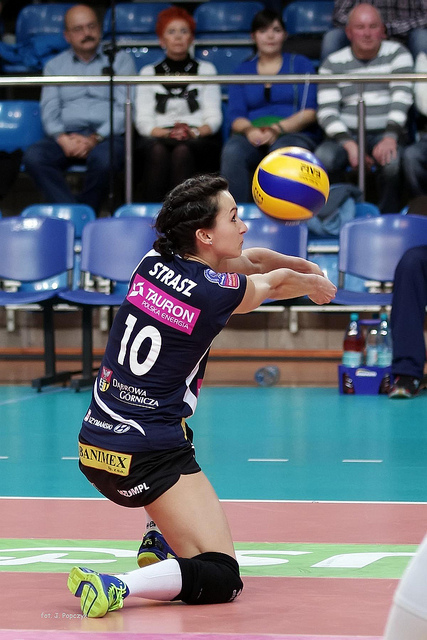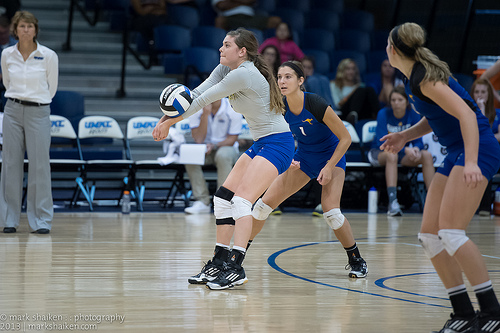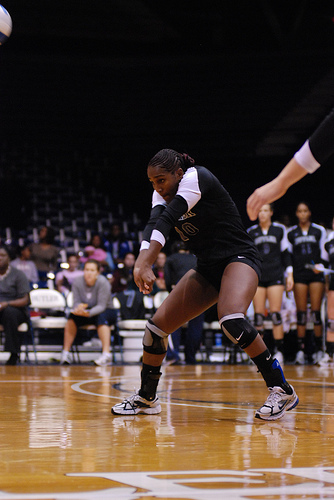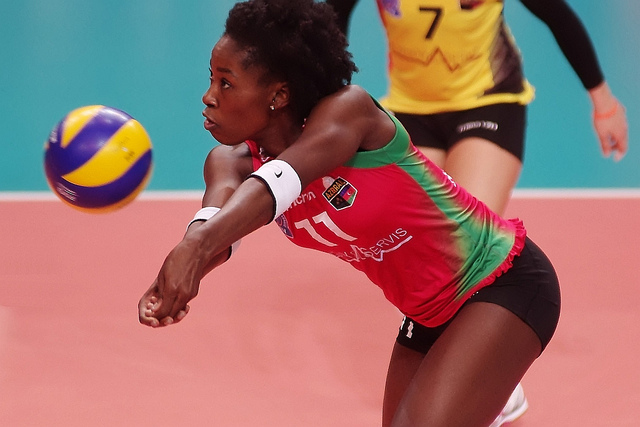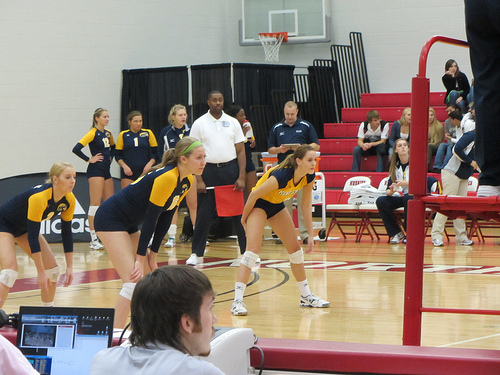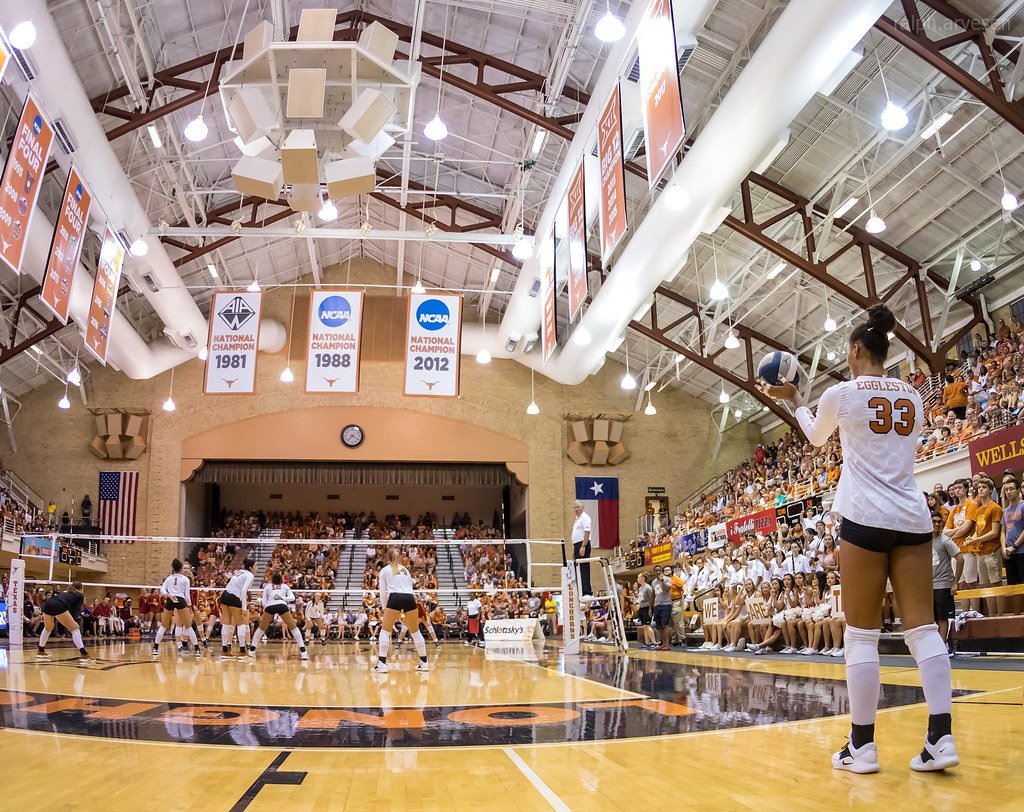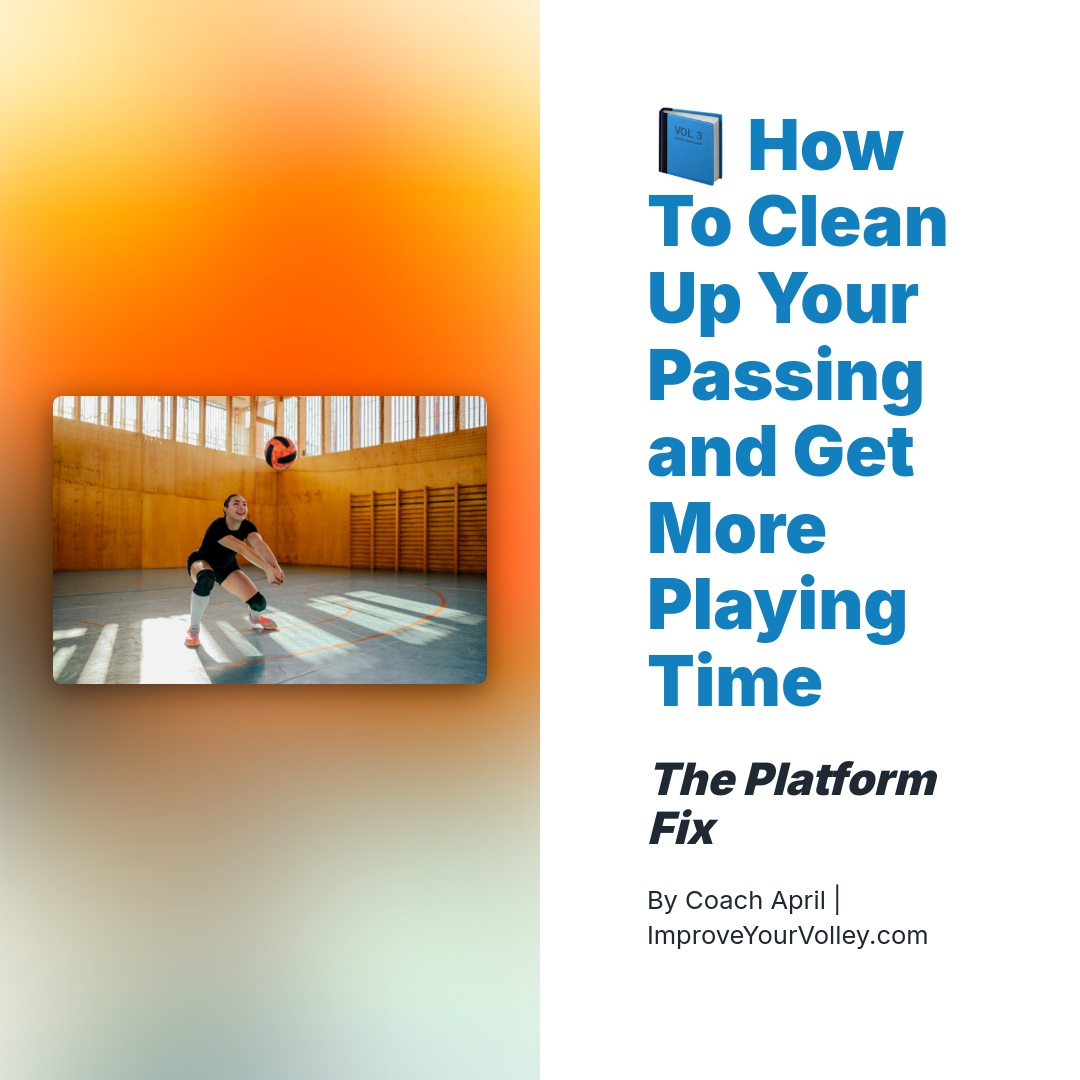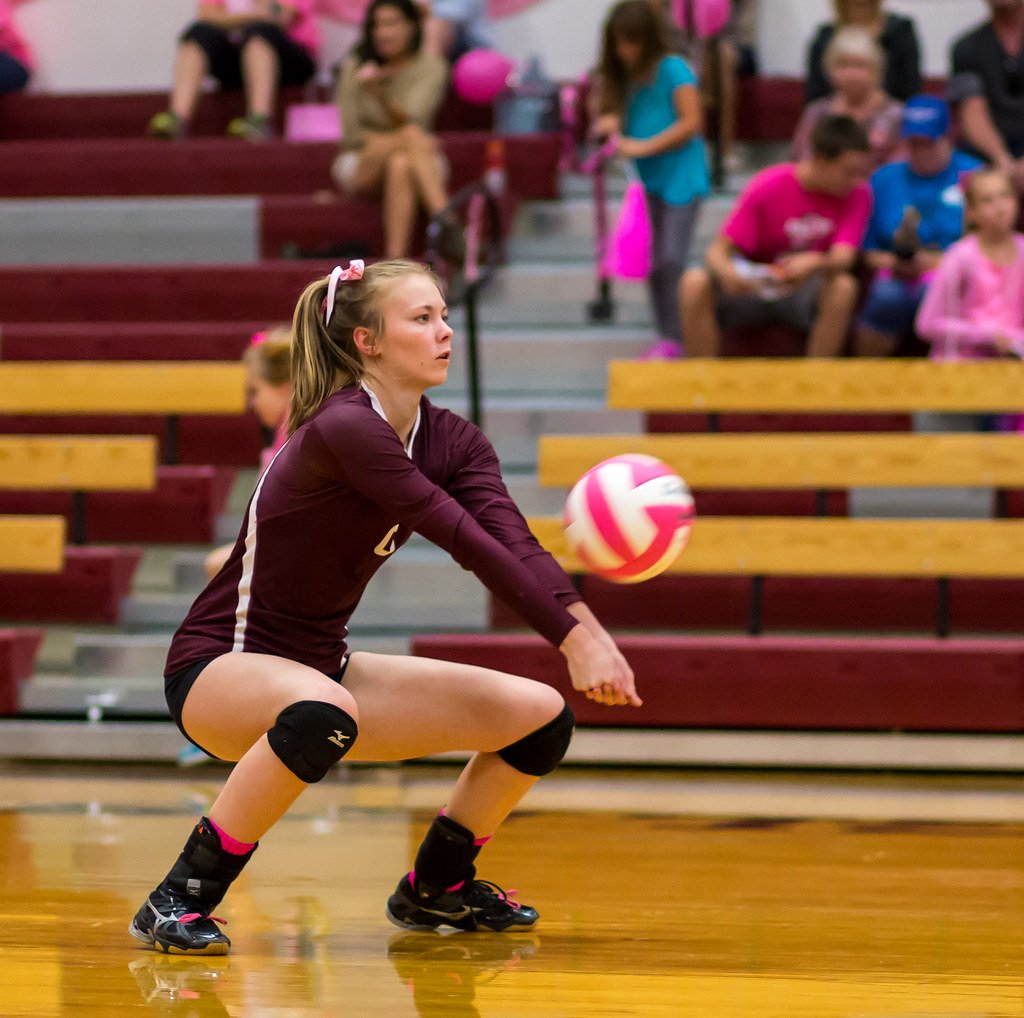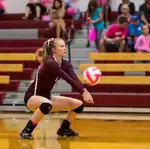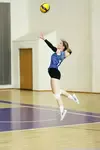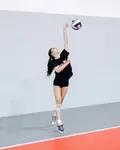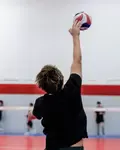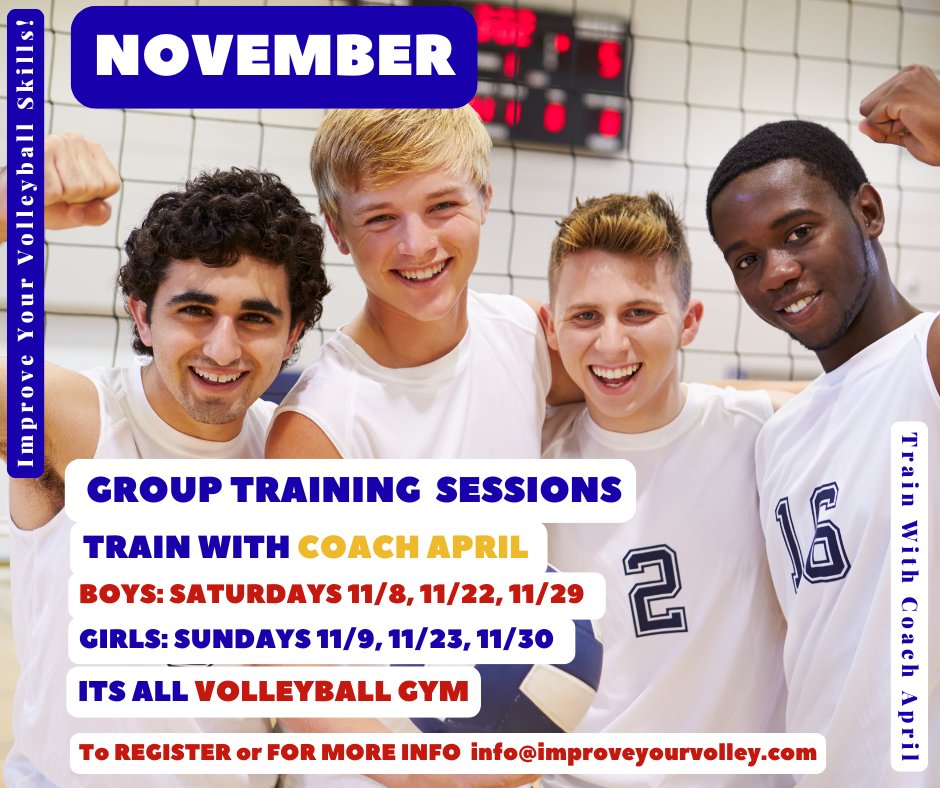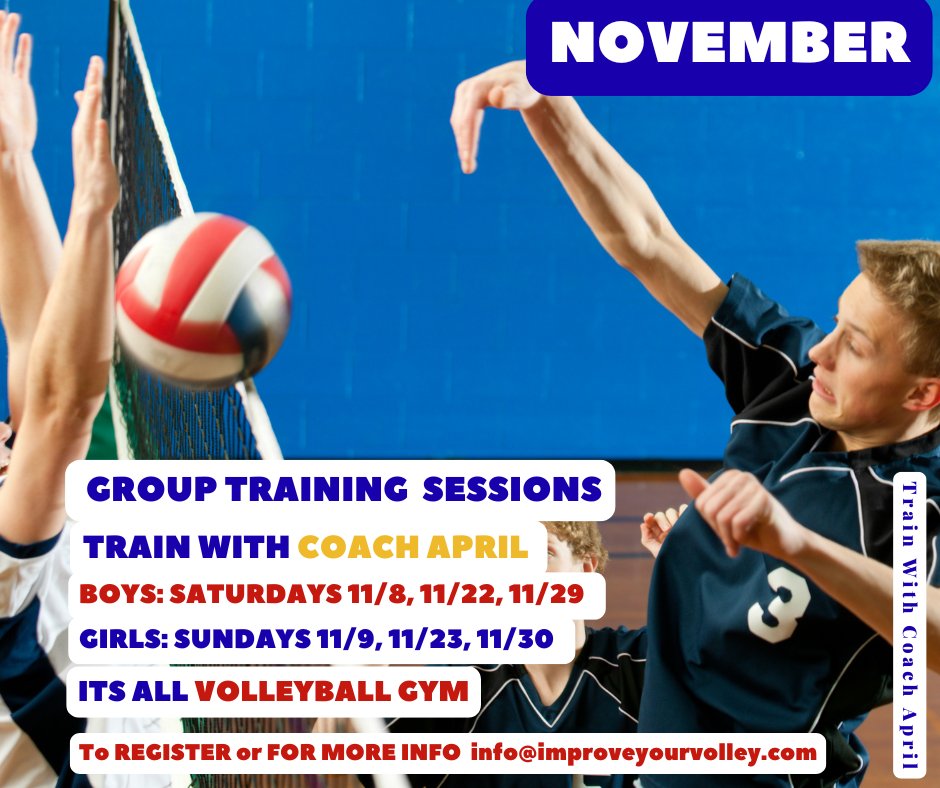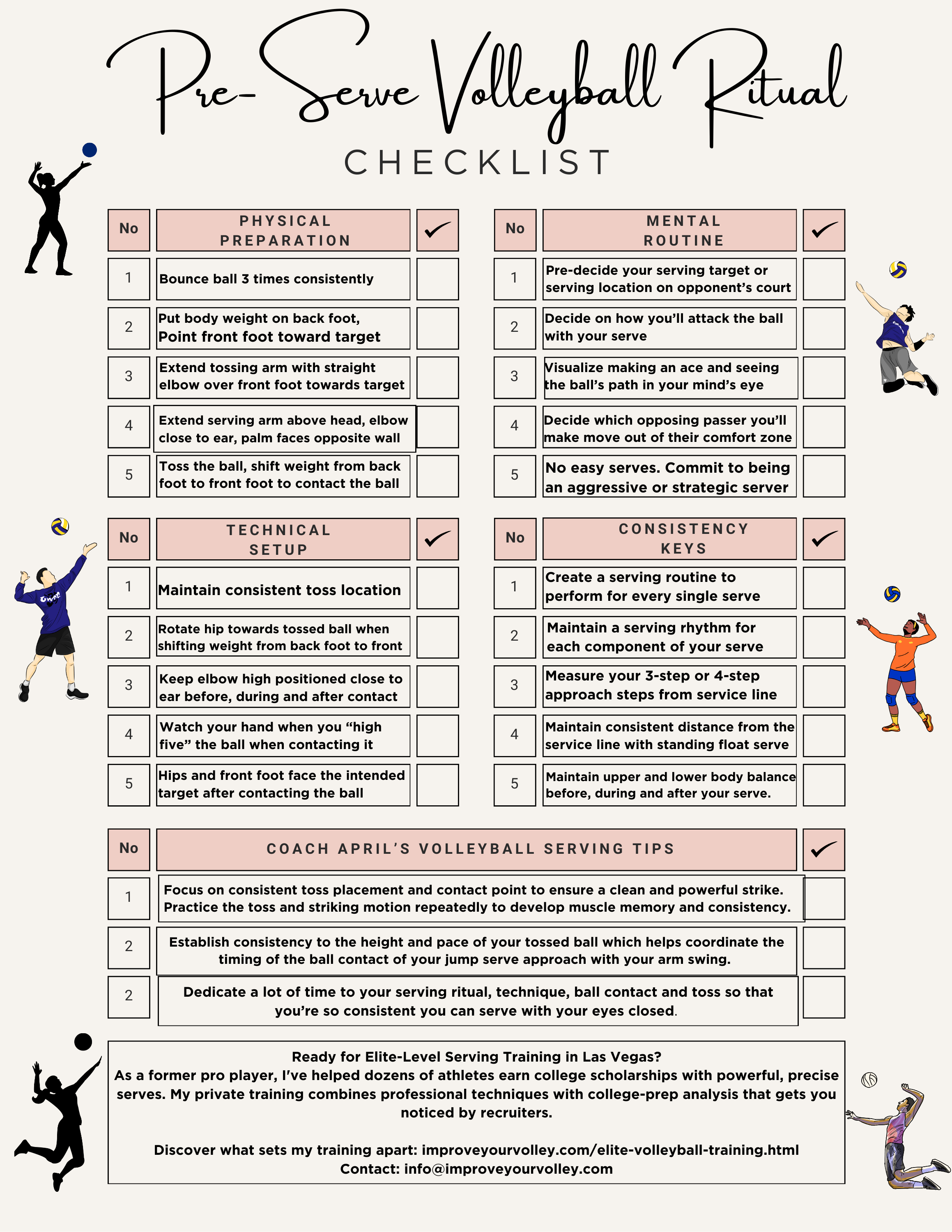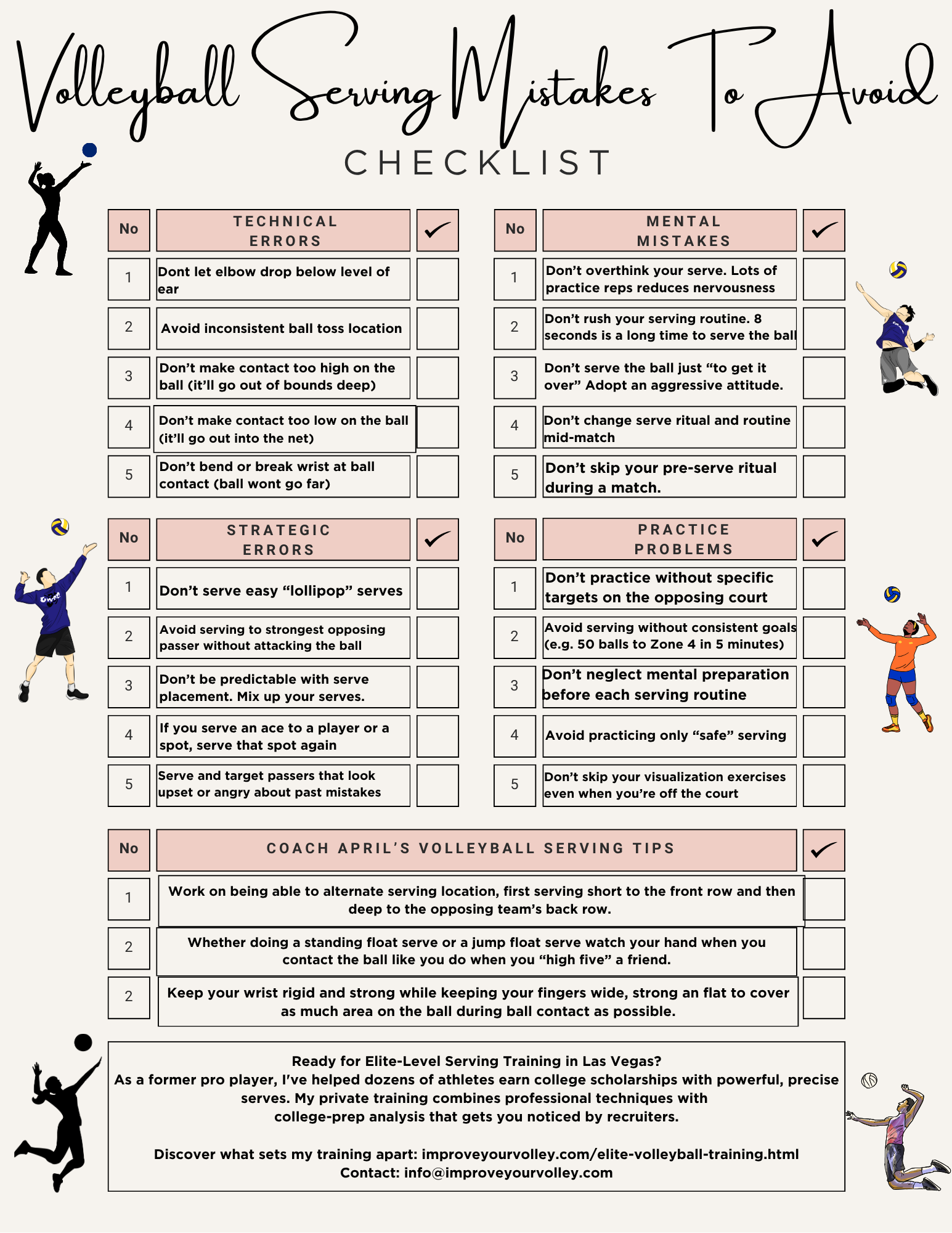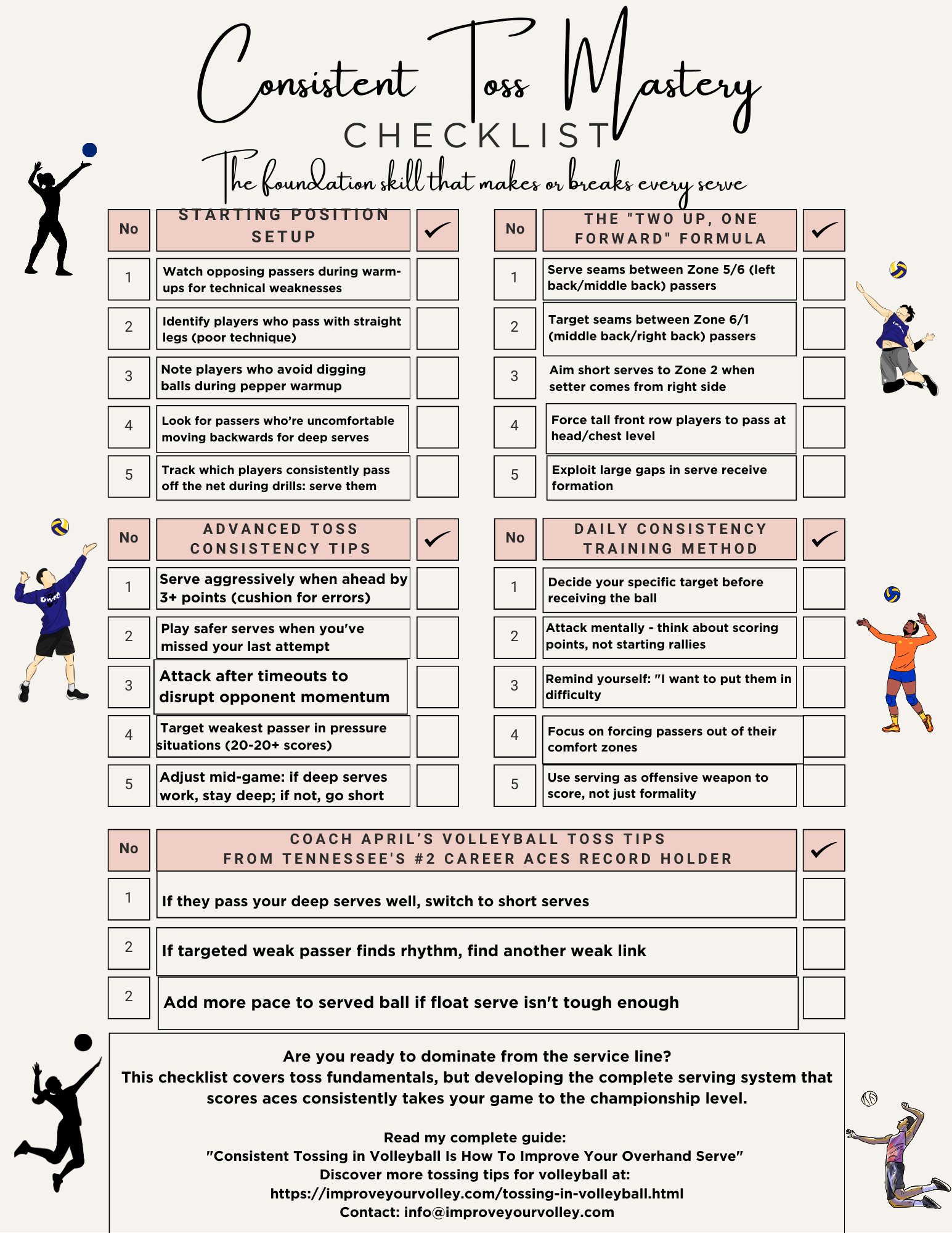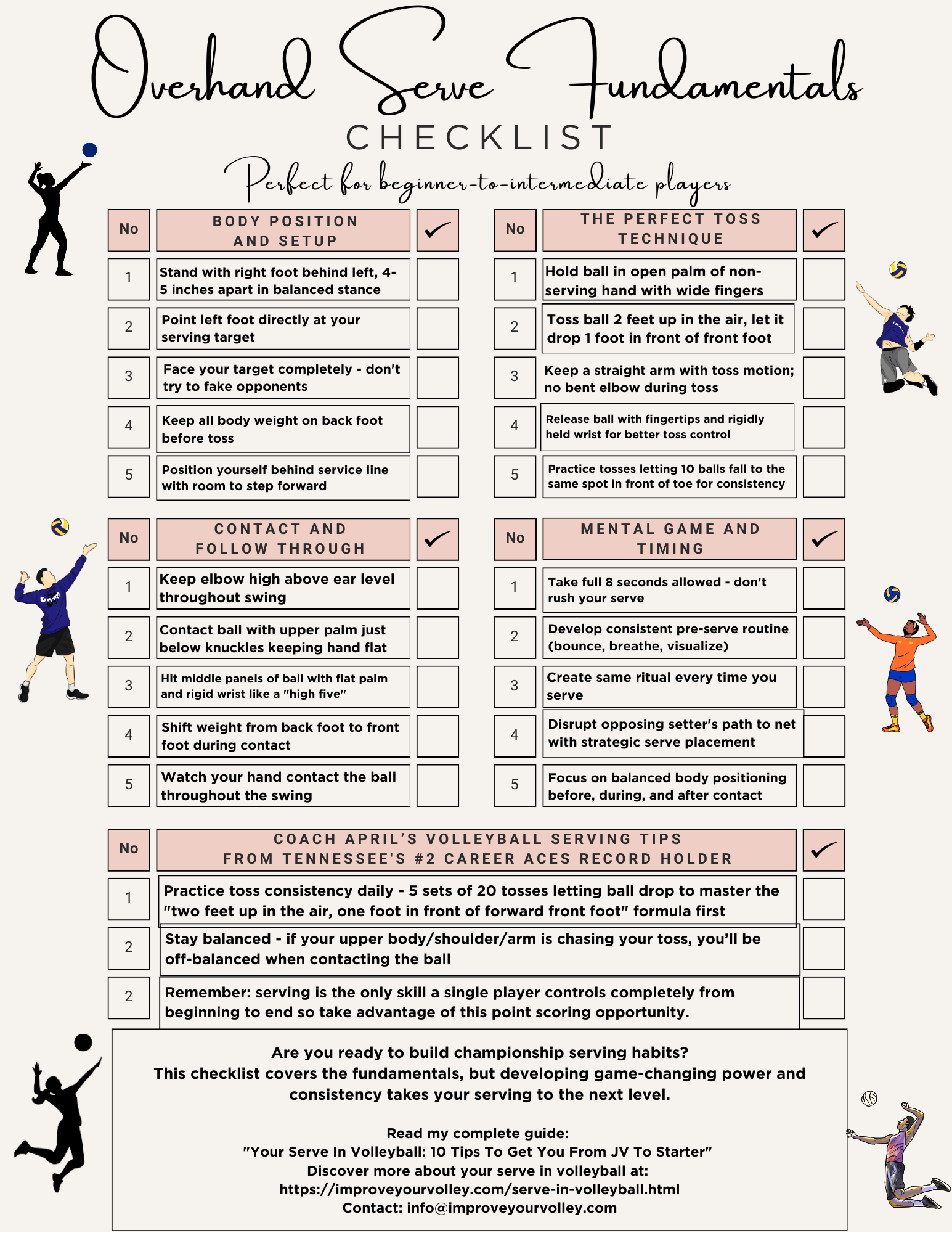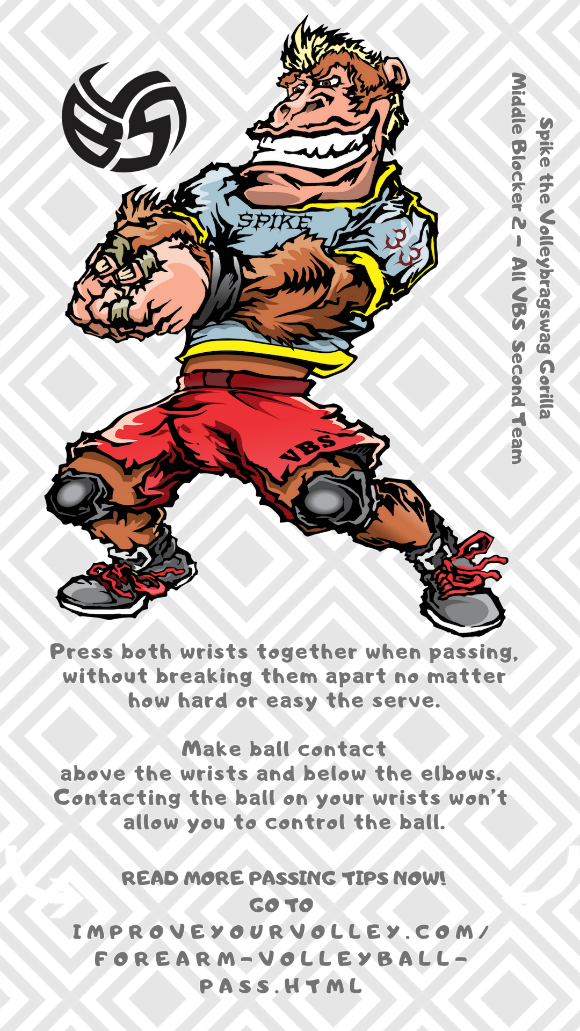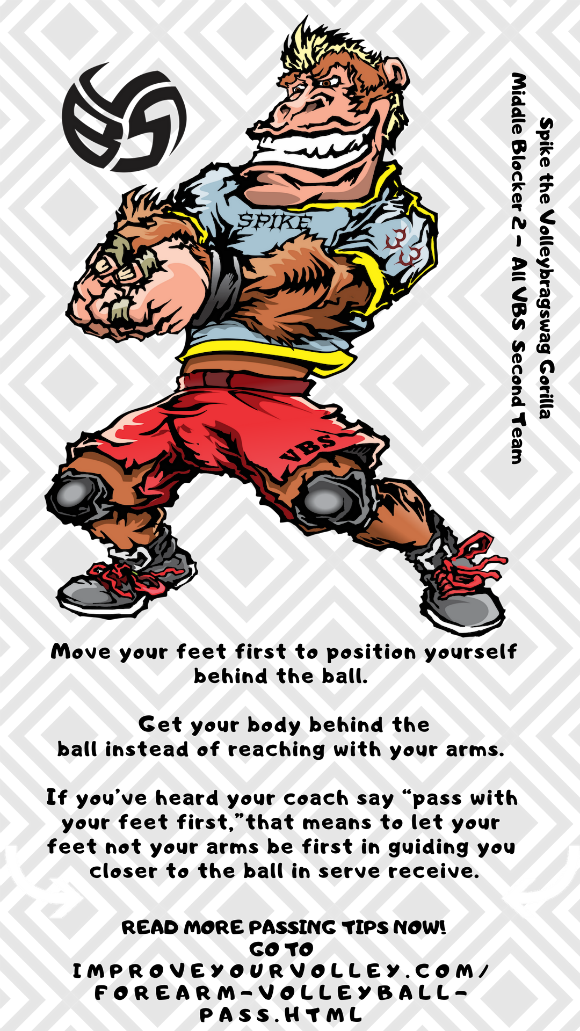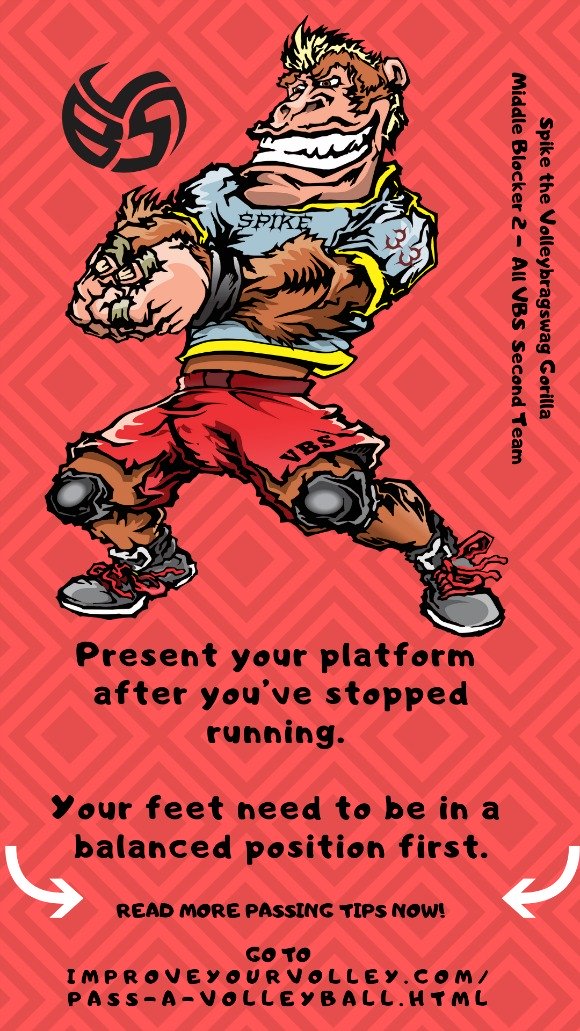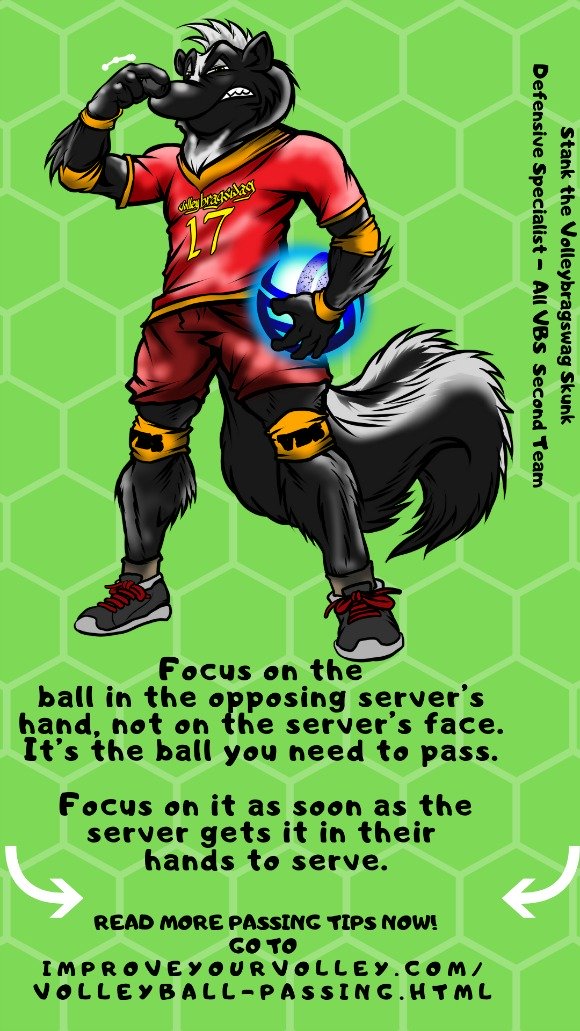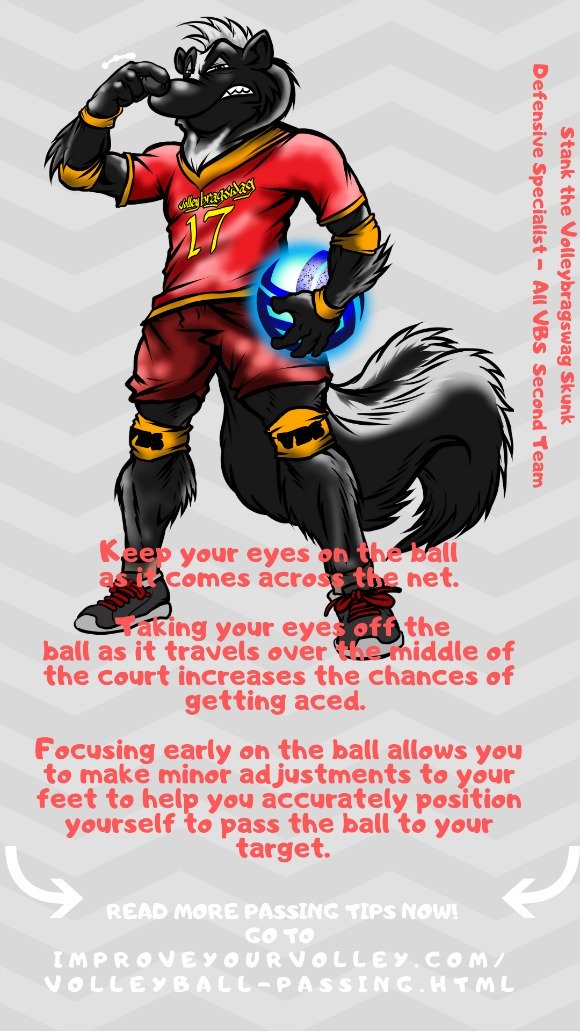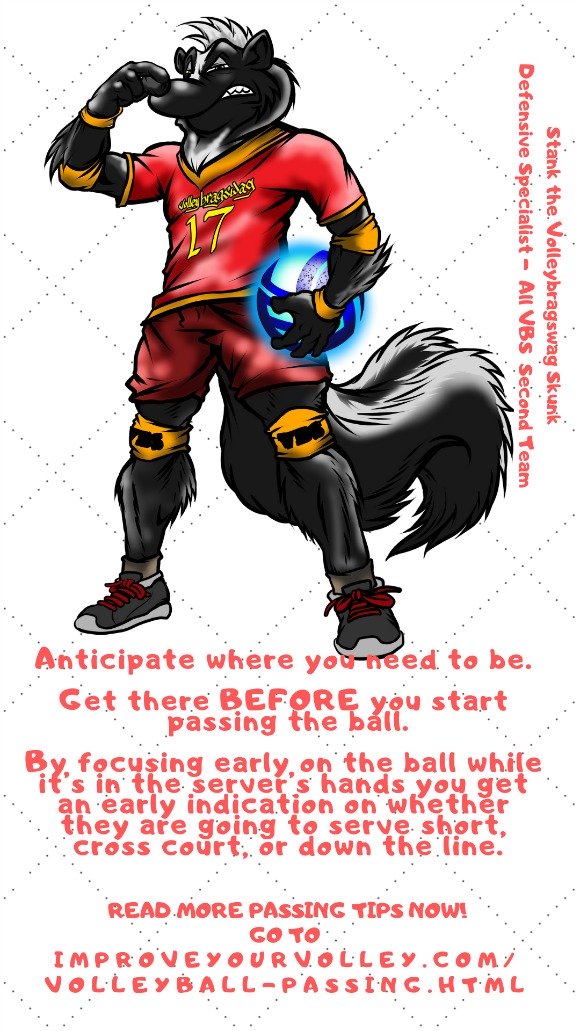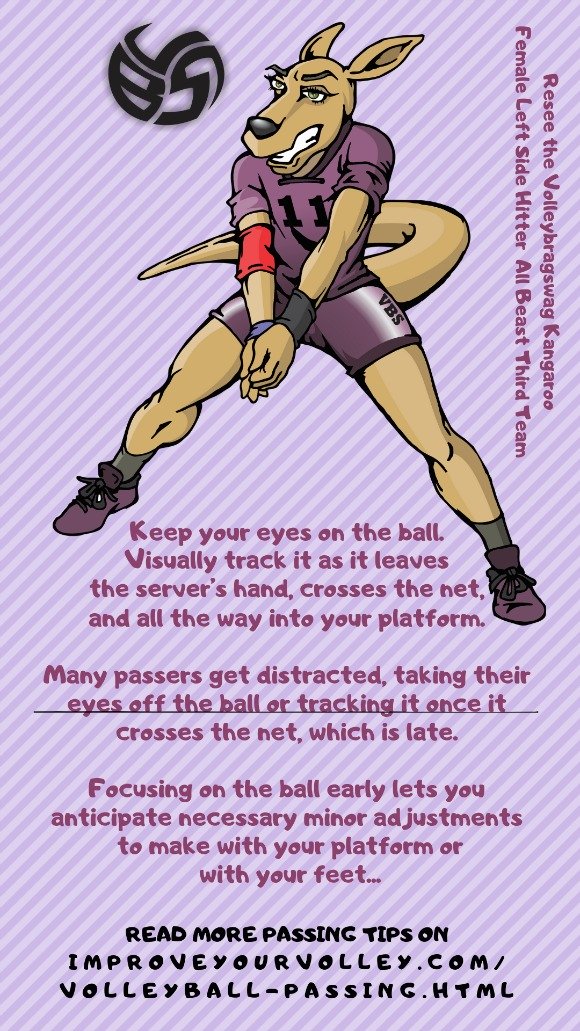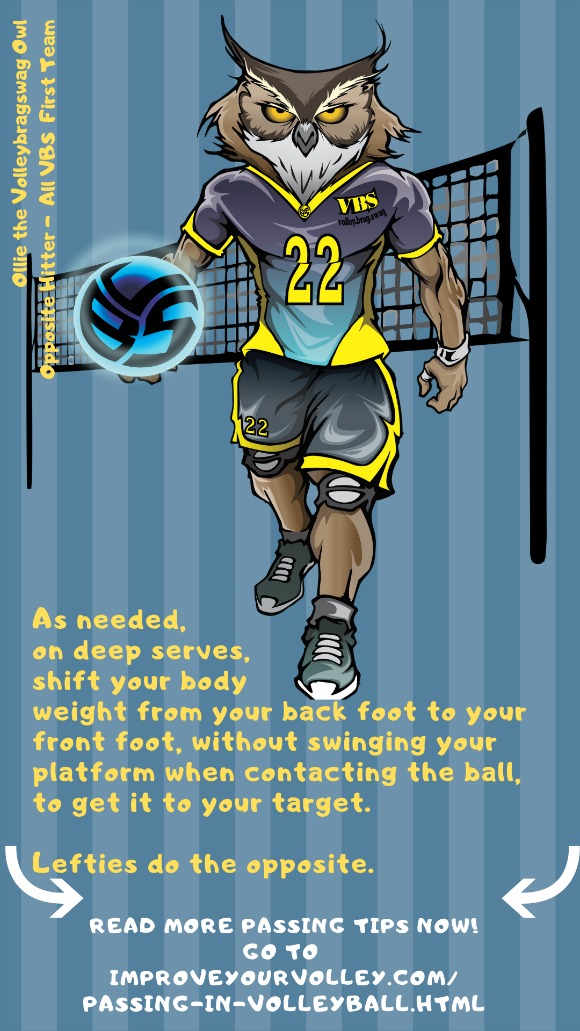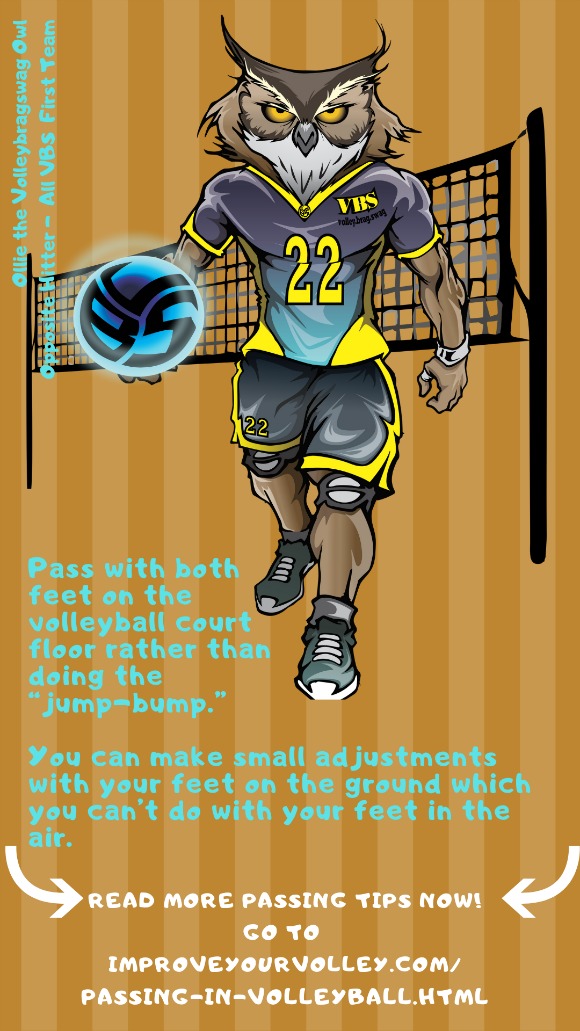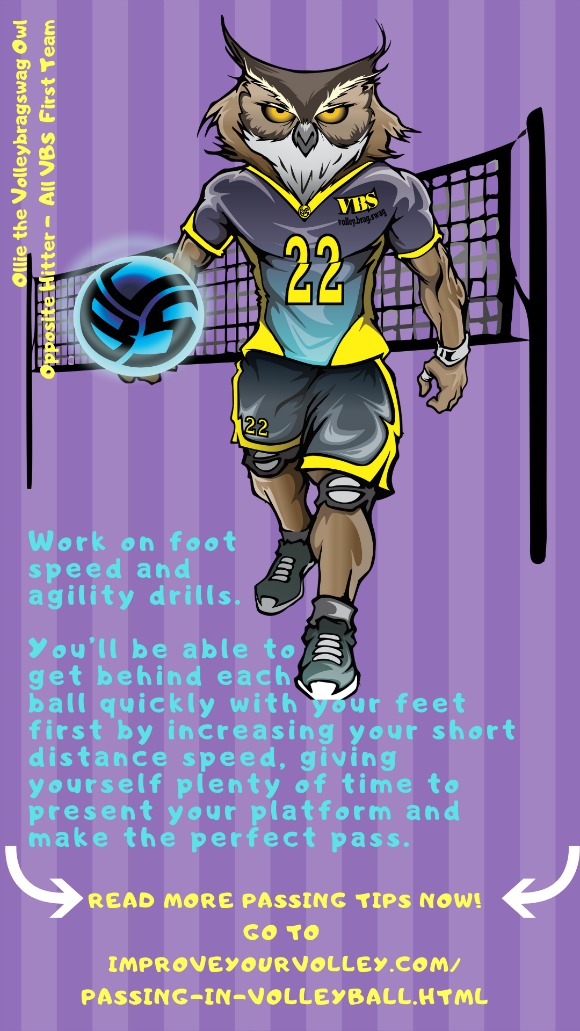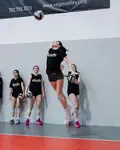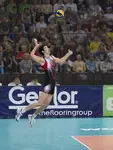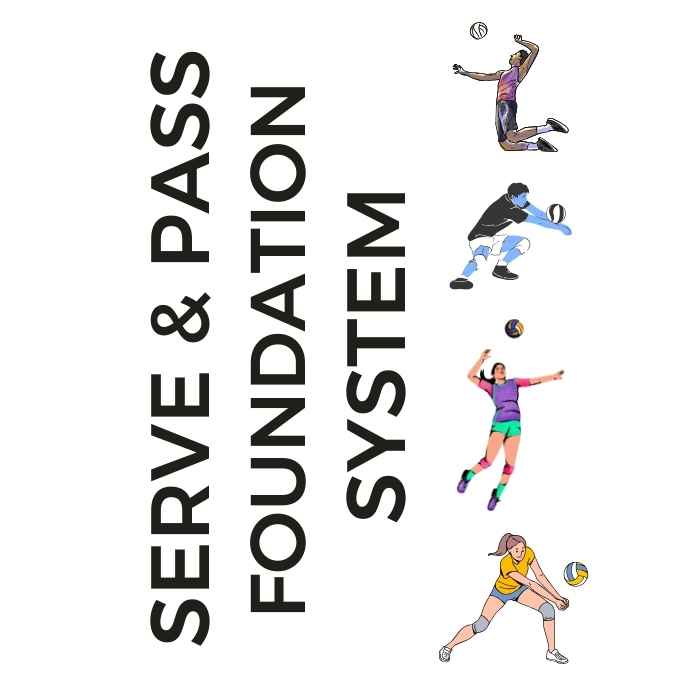
Serve + Pass Foundation System: The Complete Skills Arsenal The two-skill mastery system that transforms inconsistent players into the athletes coaches build their lineups around. Stop Struggling With The Two Most Important Skills In Volleyball!
- Improve Your Volleyball with Coach April
- Volleyball Tips on Playing Better and Improving Your Basic Skills
- 10 Volleyball Serve Receive Tips
10 Volleyball Serve Receive Tips: A Guide To What Happens On Offense
Receiving Serve is a Crucial Part of Each Rally. Learn What Happens When Your Team Is On Offense
Volleyball serve receive, what is it?
At the beginning of a rally one team serves the ball and the other team does not. The team that is not serving has to "receive the serve. " A team that's "receiving the serve" is the team that's in "serve receive."
Now that you know where the court lines are, learn how to move efficiently serve receive within those boundaries with my serve receive strategy checklist
This is just unfair. Simone Lee up to 10 kills on 13 attacks and a ridiculous .769 hitting percentage pic.twitter.com/Kb5O4K9OwN
— Tyler King (@King_TylerB) December 8, 2017
The team on the left is the serving team on defense while the team on the right is in serve receive.
Once they "receive the serve" they will run their offense in an attempt to score a point against the defensive team.
Once a team has served the ball into the opposing team's court, the opposing team, also known as the team in serve receive, has three contacts to get the ball back into the serving team's court.
A Guide To What
Happens in Offense
How does a player pass the ball while in
volleyball serve receive?
The first (of the three) contacts is called a pass, traditionally taken underhand with both hands clasped together, one fist inside the other and with both thumbs pointed to the ground.
The volleyball pass is performed by a player who "receives" the ball after being served by the server on the serving team.
Usually in the back row, the passer uses the pass to transfer the ball ..from where she is...to the setter without catching the ball or without letting it come to a complete stop on her arms or in her hands.
That passer makes the first of the three contacts allowed to each team according to basic volleyball rules.
That first contact has a name. It's known as "passing in volleyball".
That player is the one who's "passing the ball" up to the setter and who's responsible for making the second (of the three) contacts.
The setter then overhand "sets" the ball to any one of three to five possible attackers on her team (two or three in the front row depending on the team's rotation and two in the back row).
These hitters are responsible for making the third contact, which is described as a hit or spike.
According to basic volleyball rules this third contact needs to go over the net, crossing it and landing anywhere in the opposing team's court.
Now that you're learning more about the passing volleyball ready position is - grab my step-by-step perfect platform mastery checklist used by my private training clients.
This page explains what happens when a team is on offense along with a reprint of my 10 Volleyball Serve Receive tips article that appeared on Active.com
If it doesn't then the team in serve receive earns the point and gets the ball to serve. Now the team that was on offense (in serve receive) is now on defense and gets to serve the ball.
Service reception, or for a team to be "in volleyball serve receive" means the non-serving team is on offense, ready to "receive the serve" from one player on the defensive team who's in the service zone serving the ball.
The player who is about to serve the ball must be behind his/her teams' service line and according to most volleyball rules has 8 seconds to serve the ball into the "receiving" team's court, after the referee has blown the whistle to start the rally.
Struggling with passing consistency?
I help talented passers tired of getting pulled from games because of inconsistent serve receive skills BUILD passing confidence without expensive private lessons using the same 3-step system that's helped dozens of my athletes get recruited.
Download my eBook for $7.99 and start building the passing confidence that keeps you on the court—and gets you seen by college coaches.
10 Volleyball Serve Receive Tips: A Checklist To Better Volleyball Passing
As a bonus for you, I've reprinted another article of mine that I contributed on the Active.com site which contains my 10 passing tips you can use to maximize your individual and your squad's serve reception.
- Keep your feet shoulder-width apart, with your legs slightly bent. Having your right foot 2-3 inches in front of the left lets you move quickly in any direction. Do the opposite if you're a lefty.
- Present your platform by wrapping your left hand around your right fist, thumbs pointing straight down to the ground. This positions your elbows and arms in a straight platform
Avoid turning to the target to pass to it. Keep shoulders angled to the target and drop your inside shoulder so when the ball contacts your platform its re-directed to the area you want it to go. In this case its to your setter waiting in Zone 3.
- Contact the ball on your forearms. Check that your thumbs are always pointing to the ground, maintaining the straight platform needed to pass the ball
Setting up your own practice space to improve your passing skills at home?
These portable volleyball passing trainers make it easy to practice anywhere.
- Keep your elbows straight while in serve receive. Straight elbows maintain a wider platform, giving you maximum control of the ball
- Press both wrists together when passing, without breaking them apart no matter how hard or easy the serve. Make ball contact above the wrists and below the elbows. Contacting the ball on your wrists won't allow you to control the ball.
- Keep both arms together when passing the ball. Keeping them together instead of breaking them apart and passing with one arm helps guide the ball better to the target
- Square your shoulders to the net. Face your body to the net and angle your platform towards the target before contacting the ball. This eliminates adjusting your arms once making contact with the ball.
- Remember your goal is to keep from swinging your arms during serve receive. Most serves in high school, club or college are fast enough so very little additional arm movement is needed for the ball to reach the target.
Don't turn to face your target when you're passing the ball. Once you get to the ball keep your shoulders parallel to the net and drop your inside shoulder so your platform is angled to the target.
- Finish your pass with your serve receive platform below your shoulders not above your head. This allows you to control the ball when keeping your arms and shoulders within your body range
- Move your feet first to position yourself behind the ball. Get your body behind the ball instead of reaching with your arms. If you've heard your coach say "pass with your feet first" they mean to let your feet not your arms be first in guiding you in serve receive
Passing Volleyball Tips:
Where Do You Go From Here?
What do you need to do now? You have three options:
- Learn more about volleyball offense, attacking and serve receive in the Related Links below.
- Follow the suggested reading on our Sitemap page Learning How To Play (Sitemap)
- Or visit the pages in the How to Play Volleyball section in the drop down menu at the top of the page to get started.
- Before leaving this page Say "Hi" to Ms. Resee the Kangaroo, wearing the #11 jersey below. She's a left side hitter with precision passing and a member of the VolleyBragSwag All Beast Third team.
If your athlete struggles with consistent serve receive, gets subbed out, or is overlooked for playing time—this is the fix you’ve been looking for.

Struggling with passing consistency?
I help talented passers tired of getting pulled from games because of inconsistent serve receive skills BUILD passing confidence without expensive private lessons using the same 3-step system that's helped dozens of my athletes get recruited.
Download my eBook for $17.99 and start building the passing confidence that keeps you on the court—and gets you seen by college coaches.
From Lady Vol to Legend: Coach April Produces Powerful Passionate Players...is that you?
What Are You Looking For?
Click to Download Your Pre Serving Ritual Mastery Checklist pdf:
🎯Volleyball Pre Serving Ritual Guide -
Players! Learn How To Transform Your Serve from Weak to Weapon
Click to Download Your Parent's Volleyball Serving Checklist pdf
🎯Parent's Volleyball Serving Checklist Guide
Parents! Help Your Player Develop Championship Serves (Even If You've Never Played)

Hi there!
Thanks for stopping by. Hope you learned something today that will help you reach your volleyball goals.
Be sure to subscribe to my email newsletter so you can learn more each week!
Stay strong! Stay motivated!
-Coach April

SUSCRIBE to my email newsletter below!
 Click to learn more about the weekly volleyball classes and clinics or email info@imrpoveyourvolley.com for information
Click to learn more about the weekly volleyball classes and clinics or email info@imrpoveyourvolley.com for informationCongratulations to my seven Boys-18s Vegas Volley club players who played in two state championship finals yesterday, the 3A and 5A State champinship finals at Sunrise Mountain High School.
TOURNAMENT CHAMPIONS!
A-1 Vegas Volley VBC
In It To Win It Tournament
May 2 - 4, 2025 Tournament
Gold Medalists
18s Premier Division
Vegas Volleyball's Unsung Heroes: Celebrating Moms with Peace Love Volleyball Shirts
Ready to energize your volleyball mom journey?
Subscribe to my 'Producing Powerful Passionate Peaceful Players' email list above on ImproveYourVolley.com.
You'll receive energy-boosting tips, exclusive insights from me, Coach April Chapple on maintaining momentum in volleyball.
Let's power up the Vegas volleyball scene together!
Recent Articles
-
Shop Small: Real Volleyball Training With + Results From A Real Coach
Dec 03, 25 10:30 AM
Support a woman-owned business. Get training from a former elite pro with 13+ years coaching experience. Ditch the big box store--invest in proven results. -
How to Jump Float Serve: 3 Pro Volleyball Player's Secret Serving Tips
Nov 28, 25 08:34 PM
Why do college players rely on the jump float serve? It combines power with unpredictable movement. Learn how to jump float serve like the pros in this guide. -
Use A Jump Float Serve To Create Power For An Ace Or To Start A Rally
Nov 28, 25 08:32 PM
Use the overhand jump float serve to generate a powerful serve that starts a rally after the ref blows the whistle for the player behind the service line.
 Resee the Volleybragswag Kangaroo Shirts available now.
Resee the Volleybragswag Kangaroo Shirts available now.